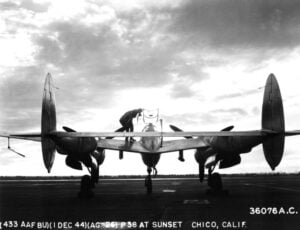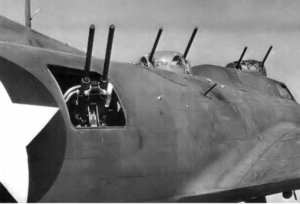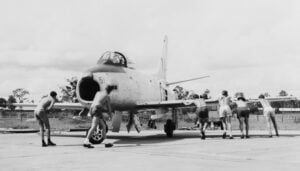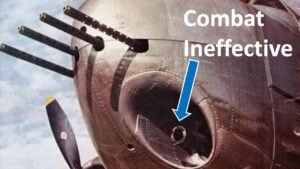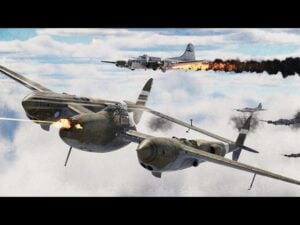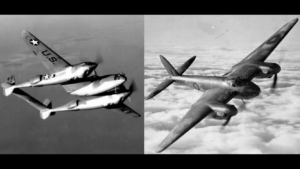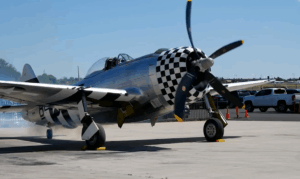8 WWII Weapons That Failed
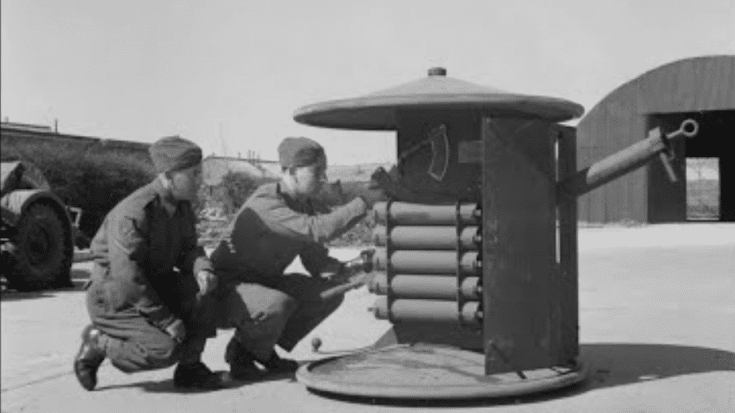
CodedUnit / YouTube
During World War II, nations invested immense resources into developing new weapons intended to turn the tide of battle. While some innovations proved successful, others failed to meet expectations due to design flaws, technical issues, or impractical concepts. Here are eight such weapons from the era that, despite high hopes, did not achieve their intended impact.
1. Panjandrum – The Ultimate Invasion Weapon
The Panjandrum was a bold British invention aimed at breaching the formidable defenses of the German Atlantic Wall. Conceived by the Admiralty’s Directorate of Miscellaneous Weapons Development, this device featured two massive wheels, each ten feet in diameter, connected by a central drum packed with explosives. The wheels were fitted with numerous rockets intended to propel the contraption rapidly up the beach and into enemy fortifications, causing a devastating explosion upon impact.
Development and testing of the Panjandrum took place in 1943 and 1944. During trials, the weapon displayed significant instability issues. The rockets often failed simultaneously, causing the device to veer unpredictably or even break apart mid-run. On several occasions, the Panjandrum posed more danger to observers than to any theoretical enemy target. Due to these consistent failures and the inability to control its trajectory reliably, the Panjandrum was never deployed in actual combat situations and remained a curious footnote in military experimentation.
2. Krummlauf – The Gun That Fired Around Corners
The Krummlauf was an innovative attachment developed for the German Sturmgewehr 44 (StG 44) assault rifle. This curved barrel extension was designed to allow soldiers to fire around corners or from within the safety of armored vehicles, providing a tactical advantage in urban combat and defensive situations. The concept included a periscope sight that enabled the shooter to aim without exposing themselves to enemy fire.
In practice, the Krummlauf faced several significant problems. The extreme bend in the barrel caused tremendous stress when bullets were fired, leading to rapid wear and deformation of the attachment. Bullets often shattered or lost accuracy as they exited the curved barrel, reducing the effectiveness of the weapon. The attachment’s durability was so poor that it required frequent replacement after limited use. Although the idea showed promise, these technical shortcomings prevented the Krummlauf from becoming a practical tool on the battlefield. Modern weapon designers have revisited similar concepts with improved materials and technology, but the original Krummlauf remained an unsuccessful wartime experiment.
3. Maus – Germany’s Giant Tank
The Panzerkampfwagen “Maus,” meaning “Mouse” in German, was an ambitious project aimed at creating an indestructible super-heavy tank. Designed by the renowned engineer Ferdinand Porsche, the Maus was envisioned as the ultimate armored fighting vehicle, boasting unparalleled protection and firepower. Weighing nearly 200 tons, it featured armor up to 240 millimeters thick and was equipped with a powerful 128mm main gun intended to outmatch any enemy tank of its time.
Despite its impressive specifications on paper, the Maus encountered numerous practical issues during development and testing, which began in 1943. Its immense weight made mobility a significant challenge, as it could only achieve a top speed of approximately 12 miles per hour, severely limiting its operational flexibility. The complex drivetrain, powered by a massive Daimler-Benz aircraft engine and electric motors, suffered from frequent mechanical failures. Additionally, its size and weight made it difficult to transport and vulnerable to becoming stuck on rough terrain or collapsing bridges. Only two prototypes were ever completed, and the Maus never saw active combat, ultimately representing a costly and impractical venture in armored warfare.
4. Covenanter – Britain’s Worst Tank
The Covenanter tank was part of Britain’s effort to modernize its armored forces at the outset of World War II. Classified as a cruiser tank, it was intended to be fast and agile, exploiting breakthroughs and supporting offensive operations. Designed in 1939, the Covenanter featured a low profile, large wheels, and sloped armor, giving it a sleek and modern appearance that promised effective performance on the battlefield.
However, upon its delivery in 1941, several critical flaws became evident. The tank’s 2-pounder gun and 30mm armor were already outdated compared to enemy counterparts, limiting its combat effectiveness. More troubling were severe engine cooling issues that plagued the Covenanter throughout its service life. The engine overheated frequently, and attempts to rectify the problem proved unsuccessful. Due to its unreliability and mechanical problems, the Covenanter was deemed unsuitable for combat and was relegated to training duties within the British Army. A total of 1,771 units were produced, but none saw action, marking the tank as a significant disappointment in British armored development.
5. TOG – A World War I Tank Revived
The TOG tank series was an unusual project that sought to apply World War I trench warfare concepts to the rapidly changing battlefields of World War II. The name “TOG” stood for “The Old Gang,” referencing the group of designers responsible for British tank development during the First World War who were recalled to contribute their expertise once again. The first model, TOG 1, was a massive and elongated vehicle designed to traverse trenches and heavily shelled terrain, featuring thick armor and armaments mounted on the sides of the hull.
As warfare had evolved significantly by the late 1930s, the TOG’s design was already outdated upon conception. The tank was extremely cumbersome and slow, making it ill-suited for the more mobile and mechanized warfare tactics of World War II. The complex transmission and steering systems added to its mechanical unreliability. A second prototype, TOG 2, introduced improvements such as a rotating turret, but it remained overly heavy and impractical for modern combat scenarios. The War Office ultimately decided not to adopt the TOG tanks, and the project was discontinued, illustrating the challenges of applying outdated concepts to contemporary warfare.
6. Maginot Line – Failed French Defenses
The Maginot Line was a massive fortification system constructed by France along its borders with Germany, Switzerland, and Luxembourg between 1929 and 1939. Named after French Minister of War André Maginot, the line consisted of bunkers, fortresses, artillery placements, and other defensive structures intended to deter and repel any German invasion attempts. The design aimed to maximize defensive strength while compensating for limited troop numbers by creating formidable barriers that would slow or stop enemy advances.
Despite its impressive engineering, the Maginot Line failed to fulfill its purpose during the German invasion in May 1940. German forces bypassed the heavily fortified sections by advancing through the Ardennes Forest, a region the French had considered impassable for large armies and therefore left relatively undefended. Utilizing swift and coordinated tactics, German troops outflanked the Maginot Line, rendering it largely irrelevant in the ensuing battles. The rapid advance caught French forces off guard and led to the swift fall of France. The Maginot Line became a symbol of misplaced confidence in static defenses in the face of modern, mobile warfare.
7. Smith Gun – Firepower for the Home Guard
The Smith Gun was an artillery piece developed to bolster the firepower of Britain’s Home Guard during World War II. At a time when resources were stretched thin and modern weapons were prioritized for frontline troops, the Home Guard needed effective yet economical solutions for local defense. Major William H. Smith, a retired British Army officer, proposed a 3-inch smooth-bore gun that could be produced quickly and used by minimally trained personnel to defend against potential invasions, particularly from armored vehicles.
The design of the Smith Gun was unconventional. The weapon was mounted on two large wheels and required tilting onto its side for firing, using one wheel as a base. While ingenious in concept, the gun suffered from several practical issues. Its accuracy was limited, with an effective range of only about 200 yards, and ammunition shortages further hampered its utility. Additionally, the awkward firing position made it challenging to operate effectively in various terrains and situations. Approximately 4,000 units were produced, but the Smith Gun saw little actual use and primarily served as a morale booster rather than a truly effective defensive weapon.
8. ‘White Rabbit’/’Nellie’ – The Trench Digging Machine
The machine known as ‘White Rabbit’ or ‘Nellie’ was an ambitious trench-digging apparatus developed by the Royal Navy, officially designated as Cultivator No. 6. Inspired by concepts from World War I and championed by Winston Churchill during his tenure as First Lord of the Admiralty, the machine was intended to excavate protective trenches, allowing troops to advance under cover toward enemy positions. Weighing a colossal 130 tons, Nellie combined a plow and cylindrical cutter to carve through earth, creating a wide and deep trench suitable for infantry movement.
Despite the theoretical advantages, Nellie proved to be impractical for the fast-paced and dynamic battlefields of World War II. The machine’s enormous size and slow speed made it vulnerable and difficult to deploy effectively. Furthermore, the nature of warfare had shifted away from trench-based strategies, focusing instead on mobility and combined arms tactics. Production of Nellie was eventually halted after only a few prototypes were built, as military planners recognized that resources would be better allocated to more versatile and immediate forms of warfare support.





















